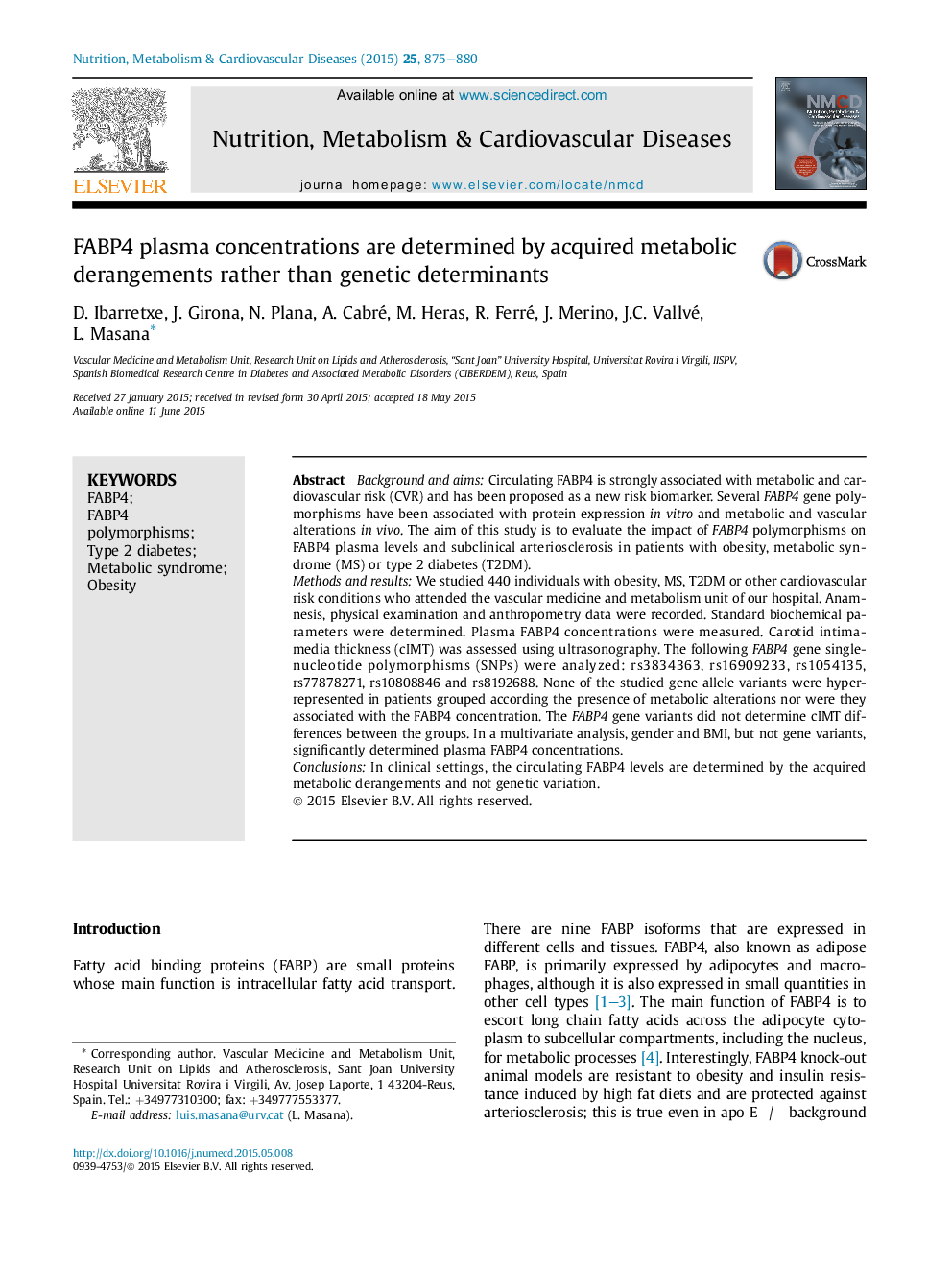| Article ID | Journal | Published Year | Pages | File Type |
|---|---|---|---|---|
| 5996484 | Nutrition, Metabolism and Cardiovascular Diseases | 2015 | 6 Pages |
â¢FABP4 levels are higher in metabolic alterations associated to adiposity.â¢FABP4 gene is mainly expressed by adipocytes and macrophages.â¢The FABP4 gene variants do not influence circulating levels.â¢Gender and BMI are the main determinants of circulating FABP4.
Background and aimsCirculating FABP4 is strongly associated with metabolic and cardiovascular risk (CVR) and has been proposed as a new risk biomarker. Several FABP4 gene polymorphisms have been associated with protein expression in vitro and metabolic and vascular alterations in vivo. The aim of this study is to evaluate the impact of FABP4 polymorphisms on FABP4 plasma levels and subclinical arteriosclerosis in patients with obesity, metabolic syndrome (MS) or type 2 diabetes (T2DM).Methods and resultsWe studied 440 individuals with obesity, MS, T2DM or other cardiovascular risk conditions who attended the vascular medicine and metabolism unit of our hospital. Anamnesis, physical examination and anthropometry data were recorded. Standard biochemical parameters were determined. Plasma FABP4 concentrations were measured. Carotid intima-media thickness (cIMT) was assessed using ultrasonography. The following FABP4 gene single-nucleotide polymorphisms (SNPs) were analyzed: rs3834363, rs16909233, rs1054135, rs77878271, rs10808846 and rs8192688. None of the studied gene allele variants were hyper-represented in patients grouped according the presence of metabolic alterations nor were they associated with the FABP4 concentration. The FABP4 gene variants did not determine cIMT differences between the groups. In a multivariate analysis, gender and BMI, but not gene variants, significantly determined plasma FABP4 concentrations.ConclusionsIn clinical settings, the circulating FABP4 levels are determined by the acquired metabolic derangements and not genetic variation.
